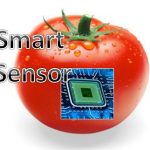fasdf@sadf.tu
Should tracing the source of the E. coli O157:H7 in lettuce be a top priority?
Almost three months after the outbreak started, consumers, the food industry, the government agencies (CDC and FDA) are getting antsy because the source of contamination for the E. coli O157: H7 in lettuce is still unknown. Most of the focus is currently on traceability. Should the focus be there? The human toll This outbreak took a huge human toll. According to an update by the CDC by now, 197 people from 35 states were infected with the outbreak strain of E. coli O157:H7. 48% of them have been hospitalized, including 26 people who developed hemolytic uremic syndrome; five deaths have been reported...
fasdf@sadf.tu
Smart Sensors, the Internet-of-Things, Blockchain and the Cloud the perfect combination for food safety-Introduction
A number of exciting new technologies are combining together to make tracing of food safety better. They include the combination of “smart” sensors transmitting their data into the Internet-of-Things (IoT). The information is made secure through Blockchain. The massive amount of data generated by the process resides in the cloud. While most of these technologies are in their infancy, significant strides are made to make them a reality. Smart Sensors Definition Advancement in technology and automation brought us smart sensors that become more prevalent now. A smart sensor is a device or instrument that takes input from the physical environment and uses built-in...
fasdf@sadf.tu
The Latest Update in the E. coli romaine lettuce outbreak from FDA and CDC
Outbreak update Update reports from both the CDC and the FDA summarized the status of the outbreak after its conclusion. As of June 27, 2018, the human toll from the romaine lettuce outbreak was: 210 people infected with the outbreak strain of E. coli O157:H7, 96 hospitalized, 27 developed hemolytic uremic syndrome, and 5 deaths were reported from 36 states. The most recent victim became sick on June 6. In an evaluation of the environment in the Yuma growing area, including water, soil, and manure, the CDC laboratory identified the outbreak strain of E. coli O157:H7 in water samples taken from a canal in the Yuma growing region. Additional...
fasdf@sadf.tu
Smart Sensors are Coming and will Improve Food Safety
What are Smart Sensors? In our previous blog, we described how several new technologies (smart sensors, IoT, blockchain and the cloud) are being combined to make the tracing of food safety better. What is a smart Sensor? It is a device or instrument that takes input from the physical environment and uses built-in computation resources to process data and present it in a more accurate, efficient, and informative way. In most cases, they combine a sensing element with a microprocessor that processes the data and sends it to the user. Lately, smart sensors can also communicate with the internet as part of the Internet...




